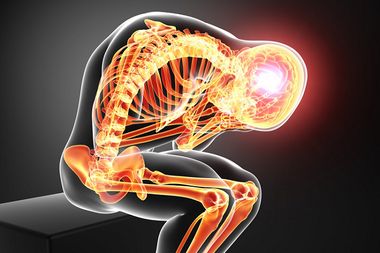Top Benefits of Chiropractic Care for Pain Management

Chiropractic medicine for pain management offers a non-invasive solution to relieve various types of pain, including chronic back and neck pain. This approach focuses on spinal adjustments to improve alignment, reduce pain, and enhance overall well-being. In this article, we will explore how chiropractic care works, the conditions it can treat, and the many benefits it offers for pain relief.
Key Takeaways
- Chiropractic care focuses on diagnosing and treating musculoskeletal disorders through spinal manipulation, aiming to alleviate acute and chronic pain and enhance overall well-being.
- Personalized chiropractic treatment plans are developed based on individual health needs, incorporating thorough assessments to effectively address specific conditions and improve patient outcomes.
- Chiropractic care serves as a non-pharmaceutical alternative for pain management, significantly reducing the reliance on opioid prescriptions and offering holistic health benefits.
Understanding Chiropractic Treatment for Pain Management
Chiropractic care is a specialized healthcare field primarily focused on the diagnosis and management of musculoskeletal conditions, with an emphasis on spinal manipulation or adjustment. The central goal of chiropractic therapy is to pinpoint pain origins and reestablish correct alignment within the musculoskeletal system. This form of treatment, called spinal manipulation, proves especially beneficial for those suffering from persistent neck pain and chronic low back pain, where misalignment issues are commonly implicated. To seek relief from discomfort, many patients turn to chiropractic services in pursuit of better overall health.
The cornerstone technique employed in this discipline is the chiropractic adjustment—a method that applies controlled force onto joints along the spine designed to improve joint function and alleviate discomfort. Accompanied by audible pops or cracks at times, these adjustments strive not just for symptomatic relief but embrace a holistic approach toward patient wellness by considering how bodily structures influence functionality.
A crucial step before initiating any treatment involves a detailed examination which includes collecting a comprehensive health history alongside conducting an extensive physical exam. Such diligence ensures accurate identification of spinal irregularities specific to each patient’s case while crafting personalized treatments plans aimed at addressing root causes rather than merely mitigating symptoms—enabling practitioners within this sphere like chiropractors not only provide immediate relief but also foster sustained well-being among their clientele.
What is Chiropractic Care?
Chiropractic care is a holistic approach to healthcare that emphasizes the relationship between the body’s structure, particularly the spine, and its function. This non-pharmacologic and non-surgical method of pain management aims to restore proper alignment and function to the musculoskeletal and nervous systems. The core belief of chiropractic care is that the body possesses an innate ability to heal itself. By removing interference to the nervous system through precise adjustments, chiropractic care helps the body function at its optimal level, promoting overall health and well-being.
How Chiropractic Care Works
Chiropractic care works by employing spinal manipulation and other specialized techniques to restore proper function to the nervous system and encourage healing. Chiropractors utilize a variety of methods, including spinal manipulation, therapeutic stretches and exercises, and soft tissue manual therapy, to reduce pain and enhance range of motion. By realigning the spine and other joints, chiropractic care can alleviate muscle spasms, improve joint mobility, and support the body’s natural healing processes. This comprehensive approach not only targets pain relief but also aims to improve overall physical function and health.
Conditions Treated by Chiropractic Care
Chiropractic medicine has garnered a reputation for being an effective approach to addressing spine-related health conditions. Patients frequently seek out chiropractic care primarily for issues like low back pain, neck discomfort, and headaches. These problems often arise due to factors such as incorrect posture, muscle strain or overuse, and misalignments of the spinal column.
To these prevalent complaints, chiropractic care is adept at handling more complex musculoskeletal system disorders that include herniated discs, arthritis, and scoliosis. The chronic pain in the neck or lower back associated with these conditions can severely disrupt daily life. Through the use of spinal adjustments along with rehabilitative exercises prescribed by chiropractors, the aim is to re-establish correct alignment while diminishing discomfort. Consistent application of chiropractic treatments tackles not just symptoms but also their root causes thereby aiding in preventing recurrence.
A multitude of patients report experiencing notable improvements in movement freedom and life quality following regular sessions involving chiropractic adjustments. By focusing on proper management and functioning of the musculoskeletal system, chiropractors bring forth relief from pain through a non-surgical route deemed highly effective for treating diverse health ailments.
Benefits of Chiropractic Adjustments

Chiropractic care is renowned for its ability to offer relief from acute and chronic pain without reliance on pharmaceuticals. This form of treatment proves beneficial in managing both sudden and persistent pain, facilitating enhanced movement and alleviating discomfort. Particularly for individuals grappling with enduring low back pain or neck pain, chiropractic therapy serves as an avenue towards mitigation that targets the underlying causes instead of merely concealing symptoms.
The practice of administering chiropractic adjustments plays a pivotal role in diminishing muscle rigidity and longstanding discomfort, which contributes to improved holistic health. By realigning the spine through these adjustments and reducing pressure on nerves, it fosters the body’s intrinsic recuperative abilities while augmenting functional capacity. A comprehensive strategy like this propels proper alignment throughout the body’s structure, fostering superior motion range essential for conducting everyday tasks effortlessly.
When considering patient outcomes relating to chronic ailments such as ongoing joint discomfort or other forms of relentless pain, chiropractic interventions have outperformed traditional modes found at ordinary pain management facilities. Reports from patients routinely highlight substantial gains in mobility coupled with pronounced declines in experienced agony after undergoing treatments rooted in chiropractics—making it not just an immediate efficacious remedy but one that furthers sustained wellbeing economically.
The Role of Spinal Manipulation in Pain Relief
Spinal manipulation, often referred to as an adjustment, is a cornerstone technique in chiropractic care used to treat joint pain and facilitate healing. This method involves applying controlled forces to restore proper alignment and function to the spine and other joints. Spinal manipulation can significantly reduce pain and inflammation, enhance range of motion, and promote the body’s natural healing processes. It is a safe and effective treatment option for various conditions, including chronic low back pain, chronic neck pain, and joint pain, providing substantial pain relief and improved mobility.
Personalized Chiropractic Treatment Plans
Chiropractic medicine is centered around customizing treatment plans to effectively meet the specific requirements of each patient. By assessing individual health necessities and lifestyle considerations, chiropractors craft strategies tailored to suit each person’s unique conditions and symptoms.
In designing these personalized approaches, chiropractors conduct an in-depth analysis of the patient’s medical history along with employing various diagnostic tools aimed at pinpointing precise health issues. Depending on how severe or complex a patient’s condition is, the recommended frequency for receiving chiropractic adjustments can differ significantly. Often times those grappling with ongoing problems might be advised more regular visits as part of this individualized approach that aims to provide patients with optimum treatment aligning closely with their distinct health concerns.
Chiropractic Care vs. Pain Medication

Chiropractic therapy serves as a potent alternative for those seeking relief from acute and chronic pain without the use of pharmaceuticals, providing an avenue for chronic pain management that avoids reliance on medication. It allows patients to address their discomfort at its source rather than temporarily masking symptoms with prescription drugs.
In particular, chiropractic care plays a significant role in diminishing the potential need for opioids among patients. Research has indicated that individuals undergoing chiropractic treatment are 64% less likely to be prescribed opioids when dealing with spinal pain—an essential consideration amidst increasing worries over opioid dependence and its dire repercussions.
Employing non-drug strategies, chiropractic treatment stands out as not only safer but also frequently more effective in managing persistent pain. By concentrating on spinal integrity and overall health, this approach presents comprehensive benefits that contribute to enduring relief from discomfort and enhance life quality.
Common Misconceptions About Chiropractic Care
Several common misconceptions about chiropractic care can deter individuals from seeking this beneficial treatment. One prevalent myth is that chiropractic care is solely for back pain. In reality, chiropractic care effectively addresses a wide range of conditions, including headaches, athletic injuries, and extremity pain. Another misconception is that chiropractic care is unsafe. However, scientific evidence supports that chiropractic care is a safe and effective treatment option, with a low risk of serious complications. Understanding these facts can help more people benefit from the holistic and non-invasive approach of chiropractic care.
Integrating Chiropractic Care into Your Health Routine

Incorporating chiropractic medicine into your wellness routine can yield a wide array of advantages for both mental and physical health. Chiropractors not only administer spinal manipulations, but also offer comprehensive lifestyle recommendations to encourage back health, including tips on proper ergonomics and nutritional guidance. These chiropractic adjustments contribute to preserving peak bodily function while simultaneously minimizing the likelihood of sustaining injuries, thus promoting proactive healthcare.
Engaging in consistent chiropractic adjustments can play a significant role in bolstering post-exercise recuperation by diminishing inflammation and augmenting flexibility. This is particularly advantageous for those leading an athletic or physically demanding way of life. Such care has been known to mitigate physical tension, which may lead to enhanced mental well-being with fewer experiences of anxiety and depressive episodes.
Choosing the Right Chiropractor
Choosing an appropriate chiropractor who specializes in chiropractic medicine plays a critical role in managing pain effectively and enhancing general health. It’s important to take note of how long the chiropractor has been in clinical practice which will give you a better idea of the chiropractic practitioner’s level of expertise. Particular attention should be paid to their experience with conditions similar to yours. A chiropractor who is knowledgeable about your specific type of pain will be better equipped to devise a customized treatment plan that fits your individual requirements.
Consulting patient feedback and endorsements can shed light on how effective the chiropractor’s treatments are, as well as provide insight into what you might expect regarding the care they offer. Ensuring you select a chiropractor who prioritizes understanding your objectives and addresses any worries you have is fundamental for fostering a healing alliance conducive to successful management of pain.
The Future of Chiropractic Care
The future of chiropractic care is promising, with growing recognition of the importance of non-pharmacologic and non-surgical approaches to pain management. As the opioid crisis continues to impact communities, chiropractic care is emerging as a popular alternative to pain medication. Advances in technology and research are enhancing the effectiveness and accessibility of chiropractic services, making them more widely available. As the healthcare landscape evolves, chiropractic care is poised to play an increasingly vital role in promoting health and wellness, offering a holistic approach to pain relief and overall well-being.
Summary
In conclusion, chiropractic care offers a holistic and effective approach to managing acute and chronic pain. By focusing on the root causes of pain and utilizing non-pharmaceutical methods, chiropractic treatment provides significant benefits for those suffering from chronic pain conditions. From improved mobility to reduced reliance on prescription painkillers, the advantages are clear.
If you’re dealing with chronic pain or looking for a preventive health measure, consider integrating chiropractic care into your routine. The personalized treatment plans and holistic approach can lead to a better quality of life and long-term health benefits.
Frequently Asked Questions
What is the primary goal of chiropractic treatment?
The primary goal of chiropractic treatment, called spinal manipulation, is to identify the source of pain and restore proper musculoskeletal alignment, which ultimately enhances overall health.
What conditions can chiropractic care treat?
Chiropractic treatment provides a non-surgical method to relieve conditions such as low back pain, neck pain, headaches, herniated discs, arthritis, and scoliosis effectively.
How do chiropractic adjustments benefit chronic pain sufferers?
Patients experiencing chronic pain have found that chiropractic adjustments not only alleviate their discomfort but also improve mobility and address the root causes of their pain, offering better results than conventional pain management techniques.
How does chiropractic care compare to pain medication?
Chiropractic care effectively targets the root causes of pain through non-pharmaceutical methods, reducing the reliance on pain medications, especially opioids. This approach may offer a holistic alternative for managing pain without the associated risks of medication.
What should I look for when choosing a chiropractor?
When selecting a chiropractor, it is essential to assess their training, experience relevant to your specific conditions, and to review patient feedback for insights on their effectiveness and satisfaction. This will help ensure you make an informed choice for your care.
